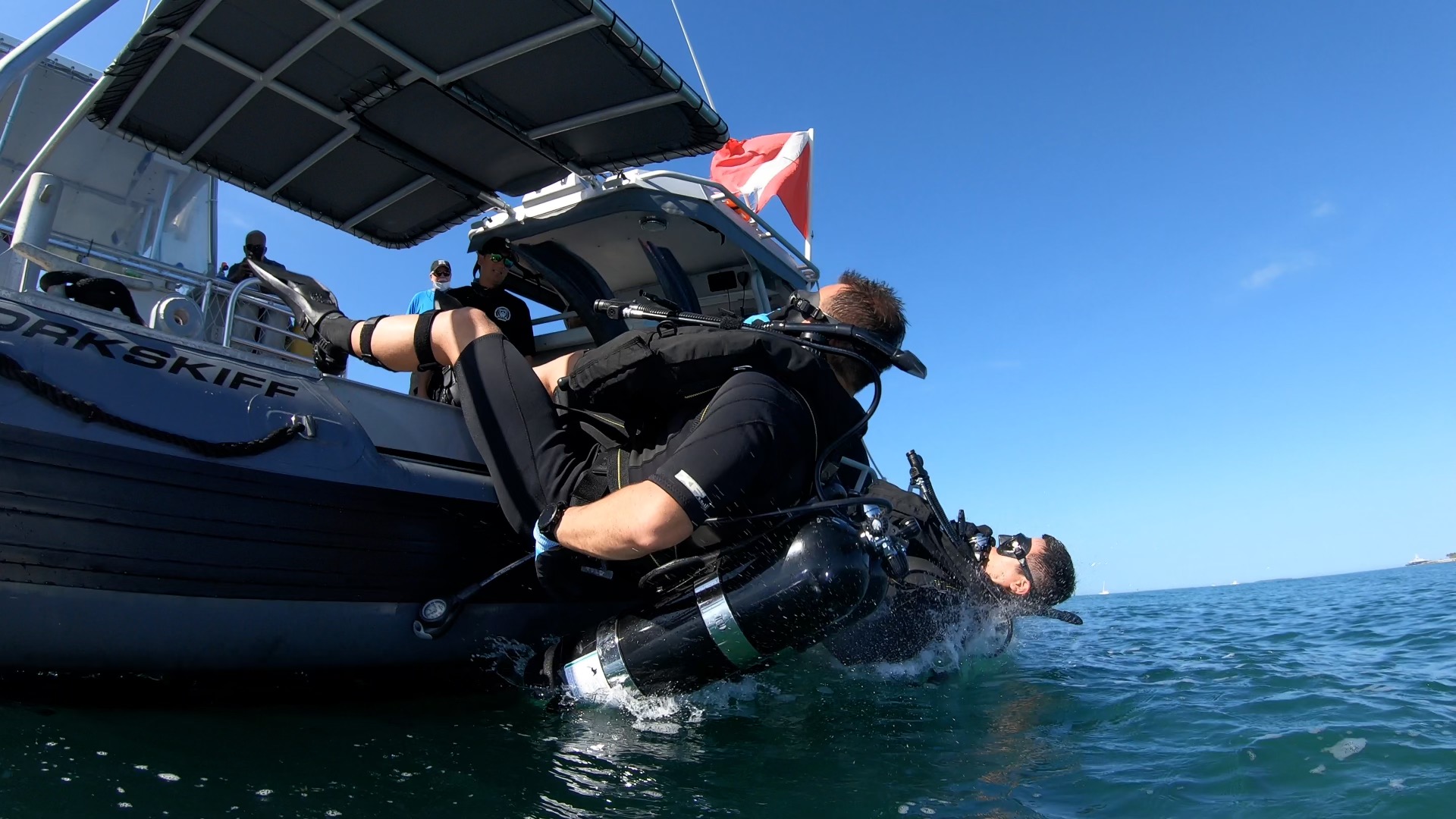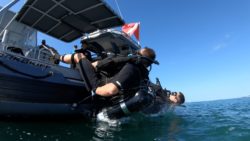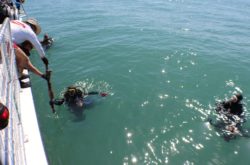
Green Berets Earn Blue Stars after Debris Removal off Key West

U.S. Army Special Forces divers remove potentially dangerous debris from waters where they train off Key West. Activity conducted under permit number FKNMS-2021-021.
The U.S. Army’s Green Berets are known as the most specialized experts in unconventional warfare. This week in waters off Key West, they took part in an unconventional assignment, removing more than 1,200 pounds of debris in waters where they train.
The clean-up was organized under Florida Keys National Marine Sanctuary’s Goal: Clean Seas Florida Keys and its Blue Star Dive program, which provides grants to local dive operators to safely remove marine debris.
“Our students do numerous dives throughout the year in that specific training area and we were able to clean it up,” said CW2 Nate Tiffany, who one day earlier graduated 32 special forces from their basic and advanced combat dive courses. “Not only does it help us safety wise for dives in that area but it helps divers in Key West in general and we were able to do this alongside our NOAA brethren.”

Metal pipes were among the finds in waters off Key West. Activity conducted under permit number FKNMS-2021-021.
Since the 1960’s Key West has been home to the U.S. Army’s only Special Forces Underwater Operations School. Last summer, a contractor looking for Civil War munitions mapped seafloor from Ft. Taylor to the reef, uncovering potentially dangerous materials where SFUWO divers navigate during nighttime underwater training. It was a perfect opportunity to pair Green Berets with the sanctuary’s Blue Star program, which is ultimately a division of NOAA.
“Florida Keys National Marine Sanctuary educates Blue Star dive operators on best practices for debris removal and over 50,000 pounds have been retrieved from Keys’ waters to date,” said Sara Rankin, local chapter director for National Marine Sanctuary Foundation which funds the program. “Pairing Blue Star divers with U.S. Army Special Forces and the U.S. Coast Guard is the most genuine representation of how a community-led program flourishes. It was a great day for our community above and below the water.”
The divers worked two locations off Truman Annex, bringing to the surface an array of cables and pipes for safe disposal. “It’s very important for us to be able to participate in protecting the resource that not only protects our living but to save it for our grandchildren,” said Bob Holston of Dive Key West and a past director on the National Marine Sanctuary Foundation board. “What we want to do is get these operators and their customers involved. They look at the reef and it’s prettier to them than most things they’ve seen. But they haven’t seen what it looked like 50 years ago.”

More than 1,200 pounds of debris was removed from the sea floor and transported to shore for disposal. Activity conducted under permit number FKNMS-2021-021.
